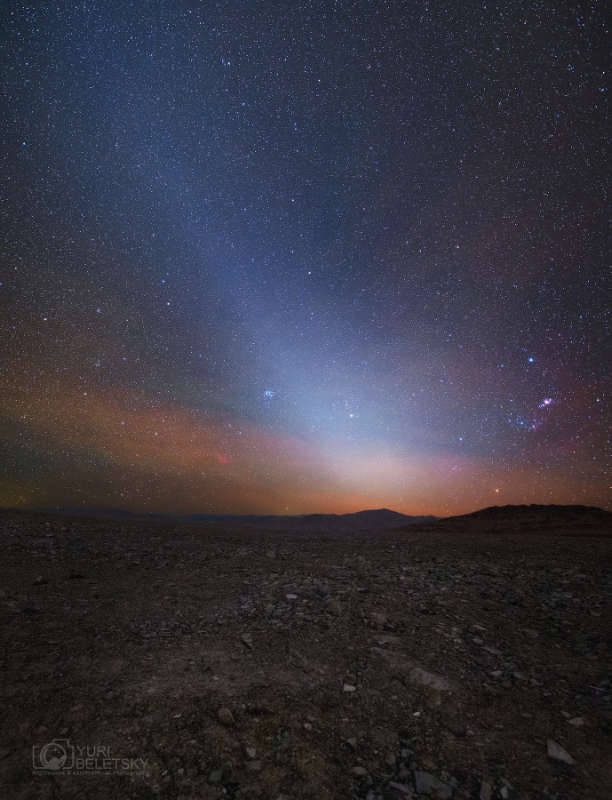Explanation: You might not guess it, but sunrise was still hours away when this nightscape was taken, a view along the eastern horizon from a remote location in Chile's Atacama desert. Stretching high into the otherwise dark, starry sky the unusually bright conical glow is sunlight though, scattered by dust along the solar system's ecliptic plane . Known as Zodiacal light, the apparition is also nicknamed the "false dawn". Near center, bright star Aldebaran and the Pleiades star cluster seem immersed in the Zodiacal light, with Orion toward the right edge of the frame. Reddish emission from NGC 1499, the California Nebula, can also be seen through the tinge of airglow along the horizon. Sliding your cursor over the picture (or following this link) will label the sky over this future site of the Giant Magellan Telescope at Las Campanas Observatory.
1999 2000 2001 2002 2003 2004 2005 2006 2007 2008 2009 2010 2011 2012 2013 2014 2015 2016 2017 2018 2019 2020 2021 2022 2023 2024 2025 |
Yanvar' Fevral' Mart Aprel' Mai Iyun' Iyul' Avgust Sentyabr' Oktyabr' Noyabr' Dekabr' |
NASA Web Site Statements, Warnings, and Disclaimers
NASA Official: Jay Norris. Specific rights apply.
A service of: LHEA at NASA / GSFC
& Michigan Tech. U.
|
Publikacii s klyuchevymi slovami:
zodiacal light - Orion - pleiades - zodiakal'nyi svet - zvezdnoe nebo
Publikacii so slovami: zodiacal light - Orion - pleiades - zodiakal'nyi svet - zvezdnoe nebo | |
Sm. takzhe:
Vse publikacii na tu zhe temu >> | |
